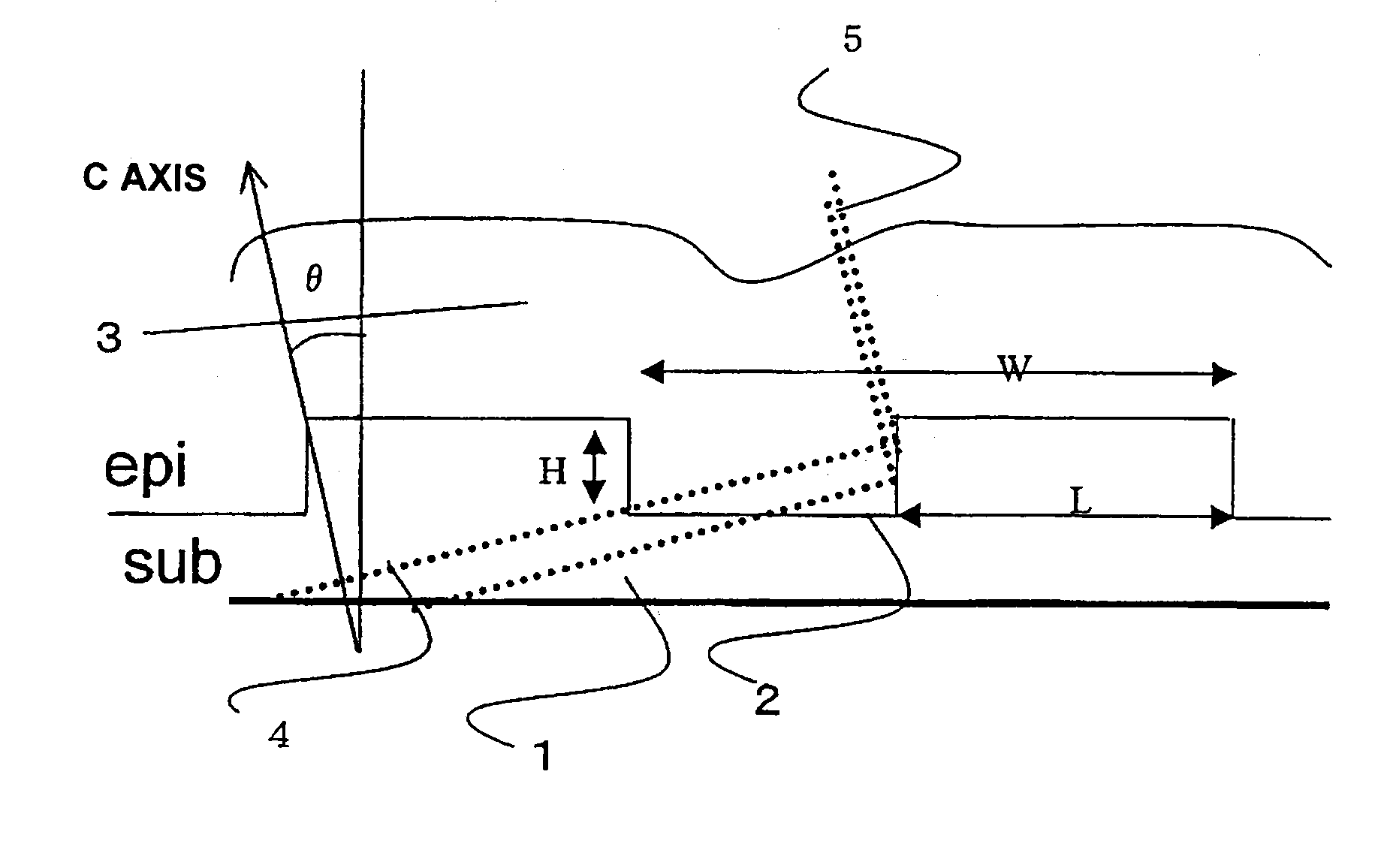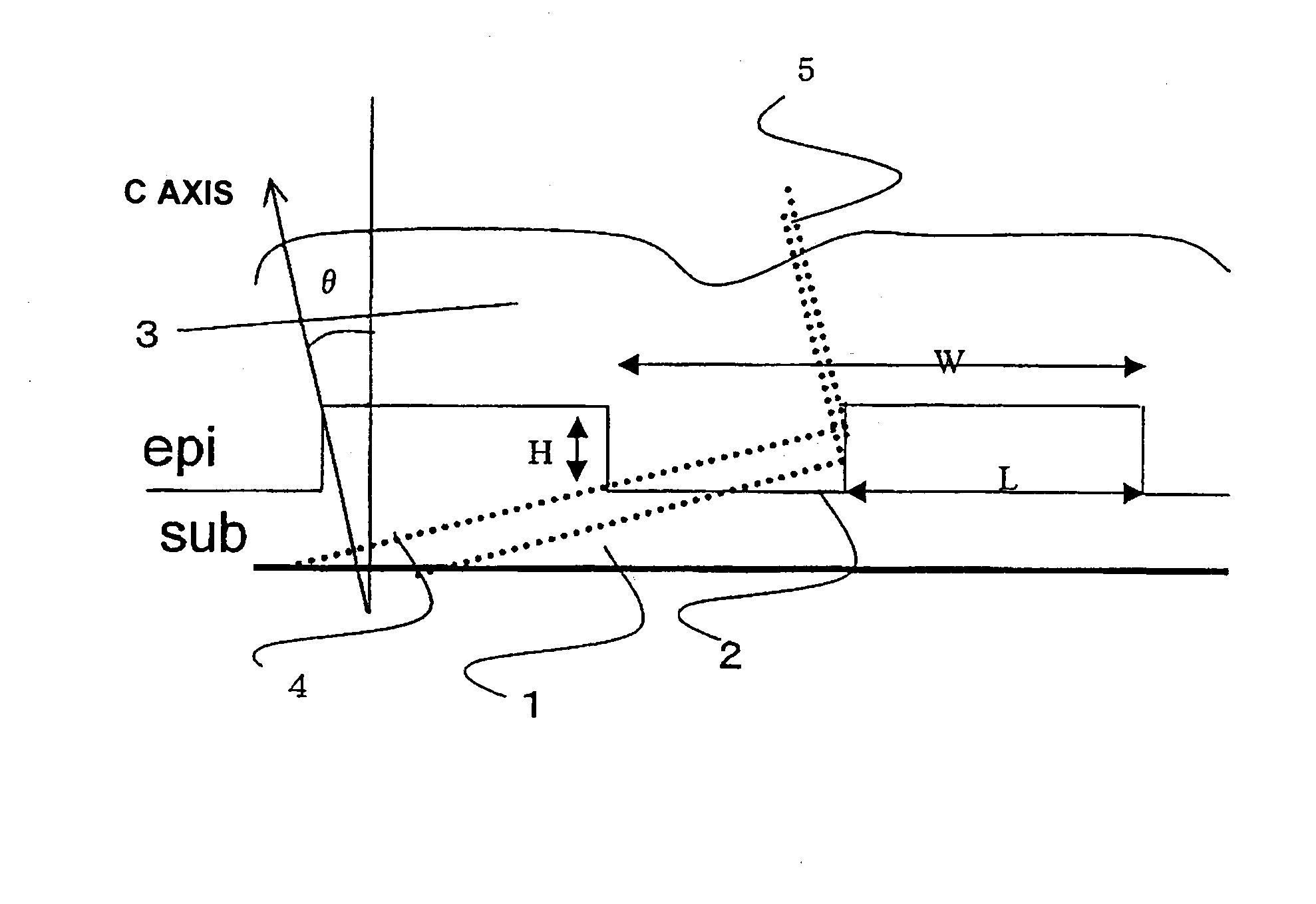Method of manufacturing silicon carbide semiconductor substrate
a technology of silicon carbide and semiconductor substrate, which is applied in the direction of crystal growth process, polycrystalline material growth, chemically reactive gas growth process, etc., can solve the problems of frequent unsatisfactory characteristics of semiconductor devices, difficult to perform, and inability to use si power devices under such conditions, so as to reduce the density of basal plane dislocations (bpds) and flatten the irregularities
- Summary
- Abstract
- Description
- Claims
- Application Information
AI Technical Summary
Benefits of technology
Problems solved by technology
Method used
Image
Examples
embodiment 1
[0023]As the substrate prior to epitaxial growth (hereafter abbreviated to “SiC substrate” or “SUB”), an N (nitrogen)-doped n-type SiC substrate (1018 cm−3) 4-H SiC single crystal, subjected to mirror polishing and CMP treatment, was used; a face polished so as to be inclined by 80 from the (0001)Si plane in the direction was used.
[0024]Trenches 2 were formed on the surface of the SiC substrate by ICP (Inductive Coupled Plasma) etching in a straight line, in a direction perpendicular to the direction of SiC substrate 1, using an oxide film as a mask. The drawing FIGURE shows a cross-sectional view of SiC substrate 1 with these trenches 2 formed. At this time, the trench depth H is set to 0.5 μm, the protruding portion width is set to 0.5 μm, and the trench interval (repetition pitch) W is set to 1.0 μm, such that basal plane dislocations (BPDs) 4 which grow always reach a trench side wall during SiC epitaxial growth. When basal plane dislocation (BPD) 4 reaches a trench side wall,...
PUM
 Login to View More
Login to View More Abstract
Description
Claims
Application Information
 Login to View More
Login to View More - R&D
- Intellectual Property
- Life Sciences
- Materials
- Tech Scout
- Unparalleled Data Quality
- Higher Quality Content
- 60% Fewer Hallucinations
Browse by: Latest US Patents, China's latest patents, Technical Efficacy Thesaurus, Application Domain, Technology Topic, Popular Technical Reports.
© 2025 PatSnap. All rights reserved.Legal|Privacy policy|Modern Slavery Act Transparency Statement|Sitemap|About US| Contact US: help@patsnap.com


